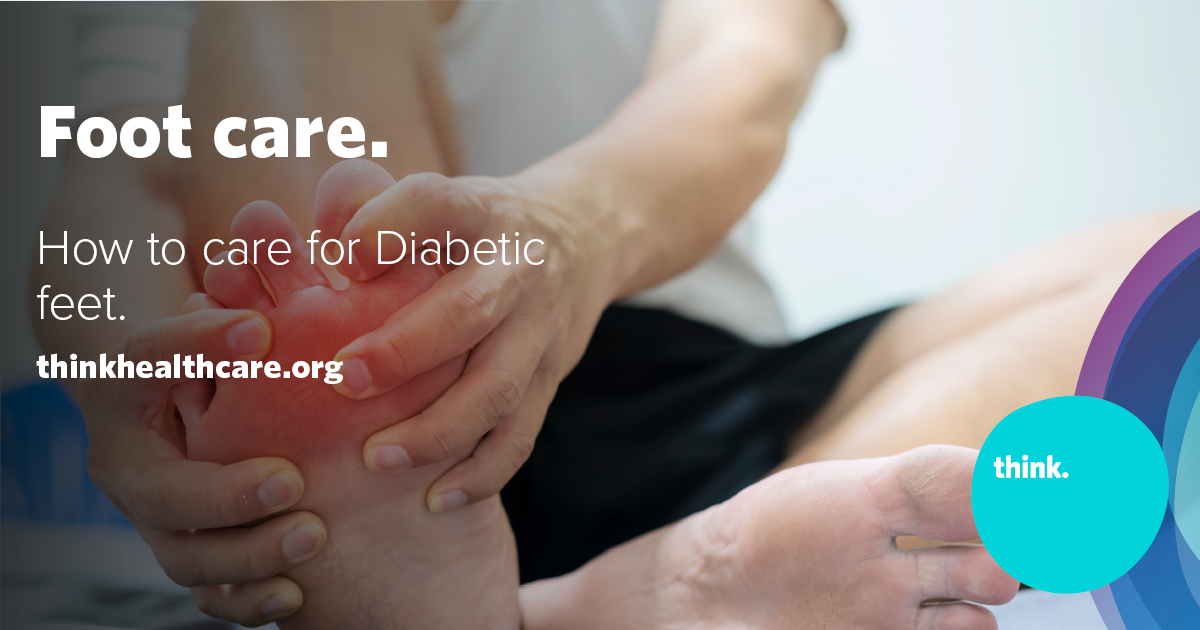Diabetes can affect your entire body, and it’s a disease that requires ongoing monitoring and maintenance, especially for diabetic feet. When it comes to your feet, diabetic patients need to take a proactive approach to foot care. The goal is to reduce the risk and avoid future complications associated with Diabetes.
What are some long-term effects of Diabetes on the feet?
Diabetes can reduce the amount of blood flow to extremities, making it difficult for otherwise minor wounds to heal — such as blisters. Without proper treatment and monitoring, a blister can fester, become infected, and turn into a diabetic ulcer. Ulcers are difficult to treat and sometimes require aggressive intervention if they become gangrenous.
Diabetic patients often experience numbness in their feet. The condition is called Diabetic Neuropathy. Diabetes can cause nerve damage to the transmitters that send signals to your brain. This condition creates sensations of tingling or numbness. In the case of numbness, patients run the risk of doing damage to their feet. A small pebble in their shoe can go unnoticed and cause blisters or wounds, leading to more serious complications.
Poor circulation is a common issue for Diabetic patients. Circulation issues may lead to bouts of edema (fluid build-up). Edema can be painful if untreated and create pressure points from ill-fitting shoes. This scenario can lead to wounds like blisters, pressure sores, ulcers, etc.
What can you do to take care of your feet?
Prevention is the best way you can avoid Diabetic foot complications. Here are six things you can do to protect your feet and health:
Inspecting your feet daily
Problems with your feet can easily go unnoticed, making it crucial to inspect your feet daily. Take a few moments each day to inspect your feet for signs of discoloration, rashes, blisters, or anything else that appears abnormal. Even if your feet feel fine, a daily inspection can benefit you in preventing more serious complications. Some additional symptoms to look out for are: dry or cracked skin, thickened and yellow toenails, change in the temperature of your feet, loss of feeling, or even pain or cramping.
Wearing proper fitting footwear
It is important to be properly measured and fitted for shoes. Ill-fitting shoes can cause friction and high-pressure areas creating skin breakdown. Shoes should be supportive and protective with an appropriate footbed. Specially designed diabetic shoes and custom molded prescription inserts may be necessary for higher-risk patients. Have your feet evaluated by a foot specialist to determine the best shoes and inserts to reduce foot injury and complications.
Foot Hygiene
Wash your feet every day with mild soap and warm water, making sure they are fully dry before putting on socks and shoes. Dryness can produce cracks that can allow opportunistic bacterial and fungal infections. If your feet become dry or cracked, consult your podiatrist for recommendations for appropriate lotions and creams.
Annual diabetic foot care checkup
Daily self-checks are a great habit to get into; however, having a professional in your corner is just as important. Regular foot exams and checkups help monitor the progression of your foot health and help identify unnoticed problems. The American Diabetes Association recommends having your feet checked every 3-6 months and every 2-3 months if you have a history of diabetic complications.
Manage your Diabetes well.
Managing your Diabetes doesn’t just help your feet but your entire body. It is the foundation of any effective plan. Speak with your Primary Care physician to help establish a comprehensive diabetic care plan.
Take care of your toenails.
Proper and routine nail care is necessary for everyone’s health — especially for a person with Diabetes. While you may be able to care for your toenails at home, patients can also schedule a visit with the podiatrists at Think Whole Person Healthcare for professional evaluation and treatment. Having an experienced foot specialist perform these treatments is important because we use medical-grade, sterilized equipment, and provide a comprehensive evaluation of the entire lower extremity. Nail care visits are especially important for those with poor blood flow and Diabetes. Both Diabetes and vascular problems can impair healing and fight infection. Poor circulation can make healing from even small cuts difficult and lead to more serious complications.
Patients with altered nerve function and decreased feeling in their feet should be evaluated and have their toenails trimmed by a podiatrist. Professional nail care can identify calluses and open areas that may go unnoticed. Long and enlarged toenails apply increased pressure to the skin and nail beds, which leads to infections or ulcerations. Patients with Diabetes, circulation problems and lack of sensation in their feet are at higher risk for infection and injury when attempting to trim toenails and calluses on their own. Insurance often covers routine foot care; however certain medical criteria must be met and determined during an exam.
If you have Diabetes or are experiencing issues with your feet, please see your doctor or schedule an appointment with our Podiatrists.
